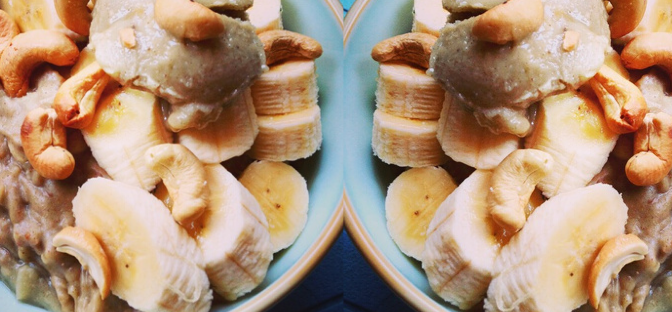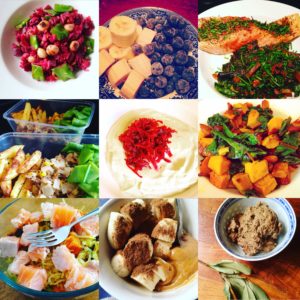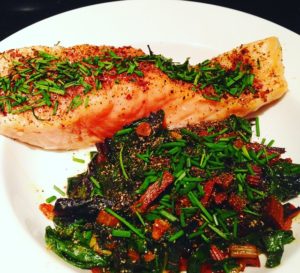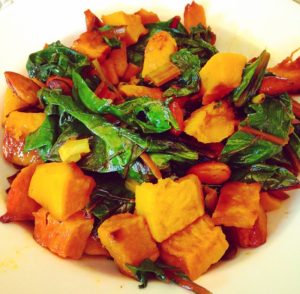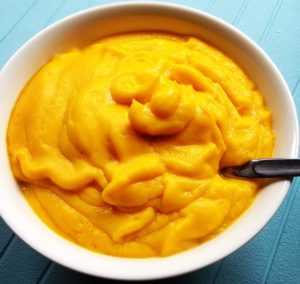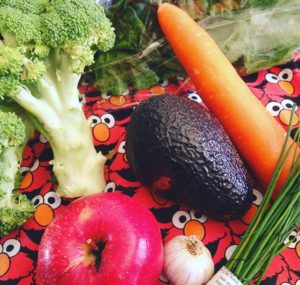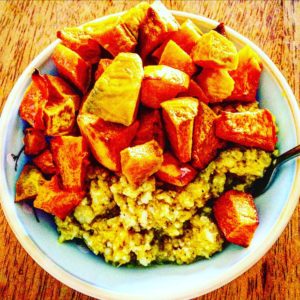Though I’ll never know everything there is to know, among friends and family I am considered “resident nutrition expert”.
The most common question I get asked is this; “in your opinion what is the healthiest diet for someone to be on?”.
Here’s my answer …
We are all different and thrive on different foods. There is no single diet that will work for anyone for the entirety of their life. The only thing I know for sure is that real, food is the best starting point for anyone. From here, we can evolve the diet to suit our current needs.
What do I mean by evolve the diet?
Taking cues from your bodies as to what it needs right now. Once you’re attuned to eating whole, unprocessed foods, your body will let you know what it wants (and what it does not) and you’ll be able to trust it.
We’ve been conditioned (I reckon) to think we must commit whole-heartedly to one particular “diet” and then prescribe to that diet for the rest of our lives. We think that if this is working for us right now and making us feel great, that this will be the case forever. The body doesn’t work this way. I’ll use mine as an example. Strap yourselves in and grab a cuppa (or hot toddy – I won’t judge). My history is complex.
In 2012, I transitioned to a whole food diet, free of processed foods. It wasn’t gluten-free or dairy-free or sugar-free or soy-free or egg-free or enter-commonly-eliminated-food-here-free. I still ate sourdough spelt bread and indulged in organic cheese. I’d use natural sweeteners such as dried fruit and honey. I still included tamari sauce and organic tofu. I loved legumes and regularly ate chicken, eggs, fish and red meat. I ate an abundance of fruits and veggies, nuts and seeds and loved brown rice and the occasional bowl of quinoa. I switched from rice bran oil to coconut oil or butter and whacked avocado on everything.
Compared to my previous diet of cheaper non-organic dairy, wheat-based bread and cereals, “treats” with refined sugar, products containing processed soy and several other items that were too chemical-laden to offer much benefit, this way of eating made me feel amazing. However, my body had so much healing to do from my liver disease.
I was still taking medications with nasty side effects and had (unbeknown to me at the time) intestinal permeability. The “honeymoon period” wore off and I started to notice that sadly, plain ole’ whole foods wasn’t good enough at that time, considering my depleted health status.
For the next 18 months I struggled. I’d sometimes go weeks barely reacting to anything and enjoying a relatively varied diet. Then all of a sudden, something I’d been eating regularly would go straight through me, trigger anxiety, induce brain fog or bring on stomach pains. Some days I’d eat bread and thrive, others toast was the bane of my existence.
There appeared no pattern and no predictability. It was bloody frustrating. This is what happens when your gut lining is damaged. Most anything can cause a reaction because you aren’t digesting or absorbing properly. Proteins are leaking into your bloodstream undigested.
I tried listening to my body wherever I could. I craved enormous amounts of chicken and veggie soup during this time. I ate baked salmon and steamed veggies about 5 nights a week. I adored banana with macadamia butter and cinnamon. I look back and see that the amino acids in the soup would’ve somewhat helped to repair gut damage. The omega-3 fats in the fish were anti-inflammatory. Bananas are gentle on the tummy and macadamias have the lowest phytic acid content of any nut (phytic acid can disrupt digestion when it’s already weakened). Cinnamon is anti-fungal and helps to regulate blood sugar. The latter likely kept infection at bay and stabilised my wavering energy levels.
Nothing I did seemed to work long-term though and by the time I was in year 12, I knew I had to do something a little more calculated. I was painfully addicted to sugar. I didn’t eat the refined white stuff anymore, but I couldn’t just eat one or two dried figs. I’d have about 6 and still be pining for more. I couldn’t just eat one bowl of granola, I’d feel the need to go back for seconds. I craved date shakes daily and was addicted to fruit. It was nutritious food, but I felt unsteady and out of control. I started to learn about the addictive mechanisms of fructose and it clicked. I did about a 5 month stint of being fructose free. This isn’t to demonise fructose – I desired a reset, not lifelong elimination.
My tastebuds readjusted. Pumpkins and sweet spuds became my “sugar”. My appetite rebalanced and my focus improved. I wasn’t suffering as many tummy-related problems (I’ll spare you the details) – probably because my overall food volume was less. I could eat 2 light and one larger meal a day and give my digestive system breaks in between. In this time, I also took to drinking kombucha. It was a refreshing probiotic beverage that felt like a treat and was sweet enough without sending me back to my crazy days of Medjool date obsession. Finally, within this time I gave bread the flick. Not to be trendy – believe me there’s nothing “cool” about not having cheese toasties in your life – but because if I was honest with myself, my breathing was far less congested without it.
In the October of that year, I reintroduced berries and fresh coconut meat. Then in November I started eating bananas again. I had lost my lifetime love for dairy, and instead craved green smoothies, bananas, avocado, slow cooked meat and lots of veggies. I also fell in love with coconut water kefir and eventually sauerkraut as well. Things were in a good state. Then on Christmas day, thinking I was pretty settled, I decided to indulge in some fresh grapes. You’d think such a wholesome option would’ve been dandy. Not so. Within 30 minutes I was rolling around on my bed with debilitating stomach cramps. Then for days afterwards my tummy felt “off”; weird spasms, bloating and generalised not feeling “great”.
In January 2015 I embarked on the GAPS diet. Out went roast spuds and green smoothies. I thought it was going to be pretty brutal but in all honesty, my intelligent little system flicked a switch and all I craved was what I needed at the time; pumpkin soup, bone marrow, gelatinous connective tissue, sauerkraut, avocado, homemade sour cream and cauliflower mash made with lots of tallow. Apart from pumpkin and carrots, I didn’t want for anything sweet, not even a ginger tea with honey. My body just wanted to heal and have deeply nourishing options.
This seemed to be just what I needed, and the only times I felt unwell or had strange digestive symptoms during the next 9 months was when I travelled (and thus wasn’t able to maintain the soups & connective tissue in the quantities I was used to). If I’m being honest with myself, I really should’ve just stayed with my days of pumpkin soup and GAPS muffins but I felt that I “should” move on and try some salad and fresh fruit. My body was alright with the salad but not so much with the fruit. Even banana, which had always been my safety-blanket.
It turned out that I had a candida infection, but my naturally low sugar-diet had been masking the symptoms. So, for a few months over the Summer of 2015/16 I eliminated even pumpkin and carrot from my diet (unless they were fermented) and did a ketogenic diet. It was miserable. I don’t recommend it. That said, it did starve the candida of it’s primary energy source; glucose. I was fine because my body could use ketones for energy during this time – fungi don’t have that secondary energy option, hence why ketosis was an indicated choice for this condition.
Another spanner was thrown in the works during this time. I came off all of my liver medication (YAY!) but this meant having to under-go a routine liver biopsy to ensure that my autoimmune disease was well and truly in remission. Complications with the surgery left me with internal bleeding which obstructed bile flow from my gallbladder and caused gallstone formation. You can read more about that ordeal here. A high-fat diet was the last thing I needed once the gallstones were present, and as I continued to learn more about the gallbladder (and my own body) I realised (eventually and reluctantly) that animal products just weren’t a priority for me anymore. If anything, these prized foods that had been my gut-healing “rocks” (I don’t know where I’d be today without bone marrow broth), were making the gallstone debacle worse.
I allowed my body to gently transition to plant-based meals and when I did eat flesh it was either in the form of fish or lean beef mince. I eventually lost my desire for all forms of flesh. I suppose if you want to “label” this way of eating, you’d say I’d gone vegan. It was out of pure intuition though, and not without a little reluctance. However, when your body only has a hankering for fruits, veggies, whole grains, nuts, seeds and legumes and zero desire for animal products, that’s what you do.
Currently, I am thriving on an exclusively plant based diet. I feel thoroughly energetic, pain-free, my bowel movements are seriously impressive (past tense me would be so jealous) and love each and every meal/snack. I take B vitamins, zinc and liver support tablets to fill nutritional gaps whilst feeling light and cleansed every day. Considering my history of liver disease, the high phytonutrients and vitamin content of my diet is something my system especially appreciates. Oh, and let’s just bring it up again, my bowels love the fibre, and I love THEM for gifting me endorphin-inducing poos.
Do you see how my diet has changed over time, and continues to do so, to suit my needs? The one constant is real, whole, nourishing food, but the macro/micronutrient ratios and food sources themselves have changed considerably. I’ve never taken on a new “diet” to be trendy. In fact, the more extreme approaches I’ve undertaken have been done out of sheer necessity rather than choice. Let me reiterate; ketosis, not fun!
I’ve come to appreciate that eating in a way that someone else (often with personal bias I might add) touts as being “the most healthful” often ends up with you taking on something that isn’t individualised enough for your unique circumstances and genetics.
No one knows your body better than you do. Your body will continue to change over time. Some days you’ll need more antioxidants or omega-3 fatty acids and others it will want truckloads of B vitamins and protein. It depends on your health status and lifestyle.
So get intuitive. There will always be people telling you that Paleo, no Vegan, no Primal, no Ketogenic, no insert-latest-diet-obsession-here, is the way to go. With years of personal, emotive experience under my belt, I an’t emphasise the importance of a more cautious approach enough. Take the bits and bobs from each approach that resonate with you and your individual make-up and push the rest aside.
